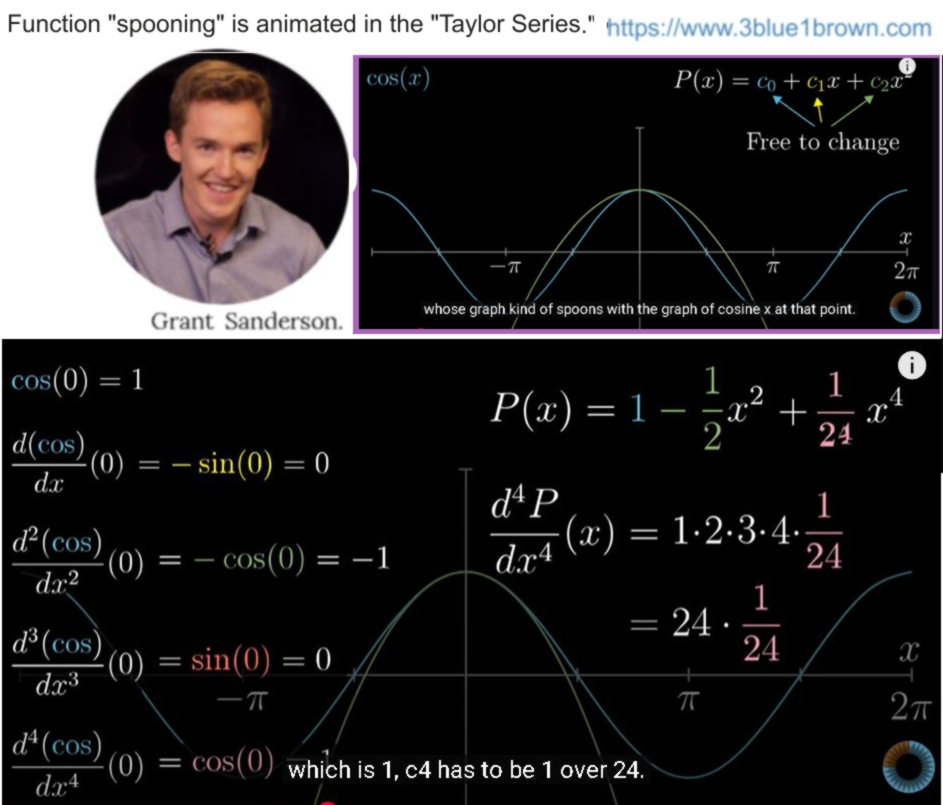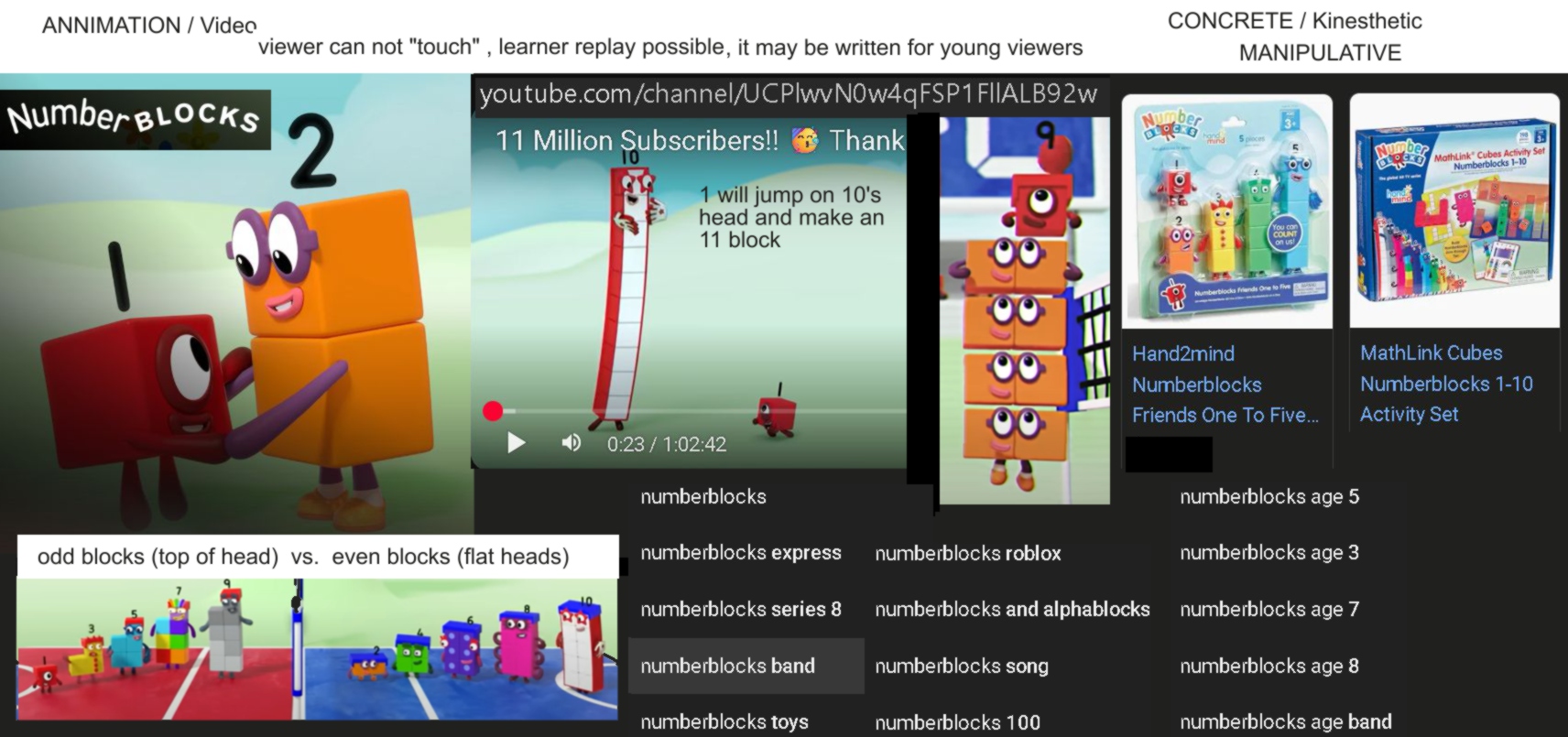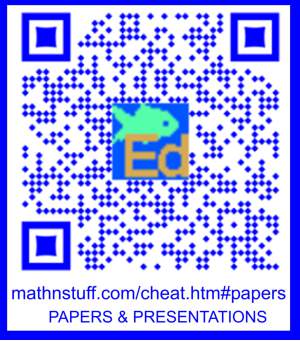|
ANIMATION / Video - A New Modality
It is now the second quarter of the 21st century. Many things changed in the
first quarter of the century. Important to the topic of language, modality, and change are the availability
of material on the internet, including free & not free courses, free downloadable software, ZOOM classes,
entire free textbooks in pdf form, and really useful videos.
Videos using animation -- things that move -- are, I believe, so powerful and different from last
century, that, for me, they are a new language.
Below are images of two samples of this new language. These videos/animations are not the
"typical" talking heads symbol-speaking while writing symbols while completeing a written computation. In
the first instance, blocks of numbers -- Number Blocks [8] -- which may be purchased in concrete
form as manipulatives, but, which exist in math movies as movie characters. These videos were on Netflicks
but are still very present and used/viewed by millions on Youtube because they are SO GOOD at presenting the math
and entertaining. Think the impact of Sesame Street in the last century moved to this century. I see them as between
the pictorial language (static) and the manipulative (concrete and active).
They present math in a way a teacher can not unless moving things digitally with Excel or Sketchpad
or a Java-enabled web page. The power of this language is not just the content. The possibility of repetition is also
important. Number Blocks exist in concrete form, in an interactive digital form, and in the animated video form.
The animated version makes it possible to just skip the concrete form which would usually require a human to narrate
or introduce its initial use. There are Number Blocks videos valuable for two-year-olds.
The second example of this new language is a Taylor series video [9] . It "speaks" pictorial/graphing
and symbolic and mathematics and mother tongue simulataneously, and beautifully.
PLEASE listen to math presented this way and consider suggesting it to the parents of young learners and
also use on occasion in you classroom. | 



